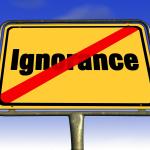Sixty percent of Americans have at least one chronic illness, and 40% of us have two or more. Unlike an acute illness, chronic disease requires patient self-care; you must help yourself, at least between doctor visits.
Health literacy
If you want to read about physicians’ “stigmatizing” terms, you might consider this.
Comprehension levels are often two or more grades below reading or education level. Comprehension drops even more when a person is under stress.
CDC's "Simply Put"
When we speak about health literacy, we are referring to two different skills.






